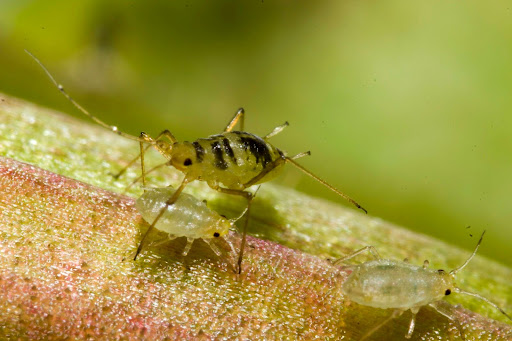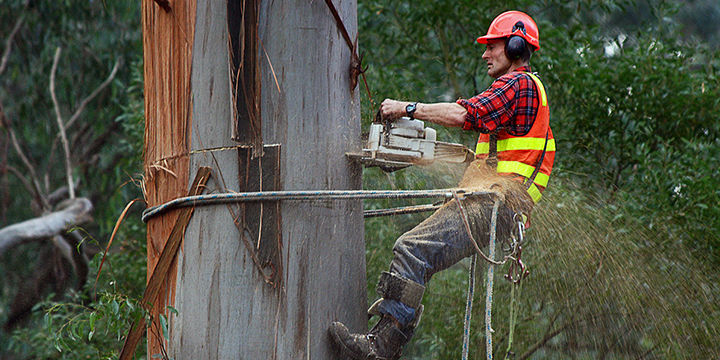
Date December 19, 2024
Category
Carbon dioxide, also known as CO2, is a gas that we hear a lot about, especially when talking about climate change. It’s released when we breathe, when cars run, and when factories operate.
While CO2 is essential in small amounts, we now have way too much of it in the air. This overload is one of the main reasons our planet is getting hotter, leading to changes in the climate.
Thankfully, trees are here to help. They absorb carbon dioxide, making them an important part of our fight against climate change.
In this article, we’ll explore what CO2 is, why it matters, and how trees, including the ones we care for at TreeNewal, play a crucial role in reducing it.
What is Carbon Dioxide?
Carbon dioxide is a naturally occurring gas made of carbon and oxygen atoms. It’s invisible and odorless, but we encounter it daily. It’s in the air we breathe out and in the fumes that come from cars, factories, and power plants.
While plants need CO2 to grow, the problem starts when there’s too much of it. This extra CO2 comes primarily from human activities, particularly the burning of fossil fuels like coal, oil, and gas, which power our homes, cars, and industries.
Every time we burn these fuels, we release large amounts of carbon dioxide into the atmosphere. Forests and oceans absorb a portion of it, but with the increasing levels of emissions, the Earth’s natural systems are becoming overwhelmed.
As a result, CO2 builds up in the atmosphere, leading to a variety of environmental consequences.
The Impact of CO2 on Climate Change
You’ve probably heard the term “greenhouse effect.” It refers to the way certain gases, like CO2, trap heat in the Earth’s atmosphere.
Think of it like wrapping a blanket around the planet. The thicker the blanket (or the more CO2), the hotter the planet gets. Over time, this leads to rising global temperatures, melting glaciers, and more extreme weather events like floods, droughts, and heatwaves.
The problem with climate change isn’t just that temperatures are rising; it’s that these changes are happening much faster than ecosystems and human societies can adapt. Polar ice caps are melting, which raises sea levels, threatening coastal cities.
Warmer oceans lead to more intense storms. Farmers struggle with unpredictable weather patterns that affect crops, and many species face extinction as their habitats change too quickly for them to adjust.
This is what we mean by climate change—the planet is warming up, and it’s happening faster than nature can handle. The more carbon dioxide we pump into the air, the worse the effects become. This is why it’s so important to figure out ways to reduce CO2 levels and keep our planet from overheating.
How Trees Absorb Carbon Dioxide
Trees are like nature’s vacuum cleaners when it comes to CO2. Through a process called photosynthesis, they absorb carbon dioxide from the air, turn it into food for themselves, and release oxygen back into the atmosphere.
Essentially, trees breathe in CO2 and breathe out the oxygen we need to survive. This is why forests are sometimes called the “lungs of the Earth.”
Forests, which are full of trees, act as giant carbon storage units. They soak up and store carbon in their trunks, branches, and roots.
This helps reduce the overall amount of carbon dioxide in the atmosphere, slowing down the pace of climate change. A healthy, thriving forest can absorb tons of CO2 every year. Even after trees die, if they decompose naturally, they release carbon back into the soil, which can continue to store it for centuries.
However, when trees are cut down and burned or allowed to rot in landfills, the carbon they’ve stored is released back into the atmosphere, adding to the CO2 problem. This is why protecting forests and planting new trees is so critical to fighting climate change.
The Role of Urban Forests
When you think of forests, you might picture remote, wild areas full of trees. But trees in cities—urban forests—are also crucial in the fight against climate change.
These trees absorb CO2 just like trees in a forest do. Plus, they help cool down cities, making them more livable as the planet warms up.
Urban trees provide shade, lower air conditioning costs, and improve air quality by filtering out pollutants. Trees in cities also create spaces for recreation, improve mental health, and enhance biodiversity.
At Treenewal, we’re dedicated to helping trees in both forests and urban areas stay healthy. Our tree care services, including soil conditioning and tree pruning, ensure that these trees continue to thrive and do their important work of absorbing CO2.
Urban forests are increasingly important as cities grow and develop. The concrete and asphalt in urban areas trap heat, creating “heat islands” that can make cities much hotter than surrounding rural areas.
Planting more trees in cities can help reduce these effects by cooling the air through shade and evapotranspiration, where water is released from leaves and cools the environment.
How We Help the Planet
At Treenewal, we understand how vital trees are for the environment and our future. Healthy trees absorb more carbon dioxide, which is why we focus on keeping trees in the best condition possible. Our services like tree nutrition and fertilization give trees the nutrients they need to grow strong and healthy.
We also provide disease and pest management to protect trees from threats that could weaken their ability to absorb CO2. Whether it’s helping trees grow or removing harmful pests, we make sure that every tree we care for can do its part in fighting climate change.
What Happens When Trees are Lost?
When trees are cut down or destroyed, the carbon they’ve absorbed doesn’t stay stored. Instead, it’s released back into the atmosphere, adding more CO2 to the problem.
This is why deforestation—the large-scale removal of trees—is such a big concern. Every tree that’s lost means more CO2 in the air and fewer natural tools to fight climate change.
Deforestation is often driven by the need for agricultural land, urban expansion, and logging. As forests shrink, not only do we lose their ability to store carbon, but we also lose vital ecosystems that support wildlife, water cycles, and local weather patterns. The destruction of forests, especially tropical rainforests, is responsible for nearly 20% of global greenhouse gas emissions.
Urban areas are especially hard hit when trees are lost. Without them, cities become hotter, the air becomes more polluted, and the overall quality of life drops.
That’s why it’s so important to plant new trees and take care of the ones we already have. Trees not only provide beauty and shade, but they also play a vital role in protecting our planet from the harmful effects of excess carbon dioxide.
The Future of Trees and Carbon Storage
As we move forward, planting trees and protecting existing forests will be one of our best strategies for reducing carbon dioxide in the atmosphere. But planting trees isn’t enough. We need to ensure they are healthy and strong so they can grow and absorb more CO2 over time.
Caring for trees is not just about planting them and hoping they survive. Trees need regular maintenance to ensure they grow to their full potential. Soil conditioning, for example, helps trees absorb nutrients and water more effectively, ensuring they have the resources they need to grow tall and strong.
Carbon dioxide plays a significant role in climate change, but trees offer a natural solution. By absorbing CO2 and releasing oxygen, trees help regulate the Earth’s temperature and keep our environment healthy.
Partner with Treenewal to Strengthen Your Trees and Combat Climate Change
If you’re ready to help make a difference for the planet while keeping your trees healthy, Treenewal is here to assist. Our expert tree care services, including tree nutrition, pest management, and soil conditioning, ensure your trees can thrive and continue their vital role in absorbing carbon dioxide. Contact Treenewal today to learn how we can support your trees and contribute to a greener, healthier future.












